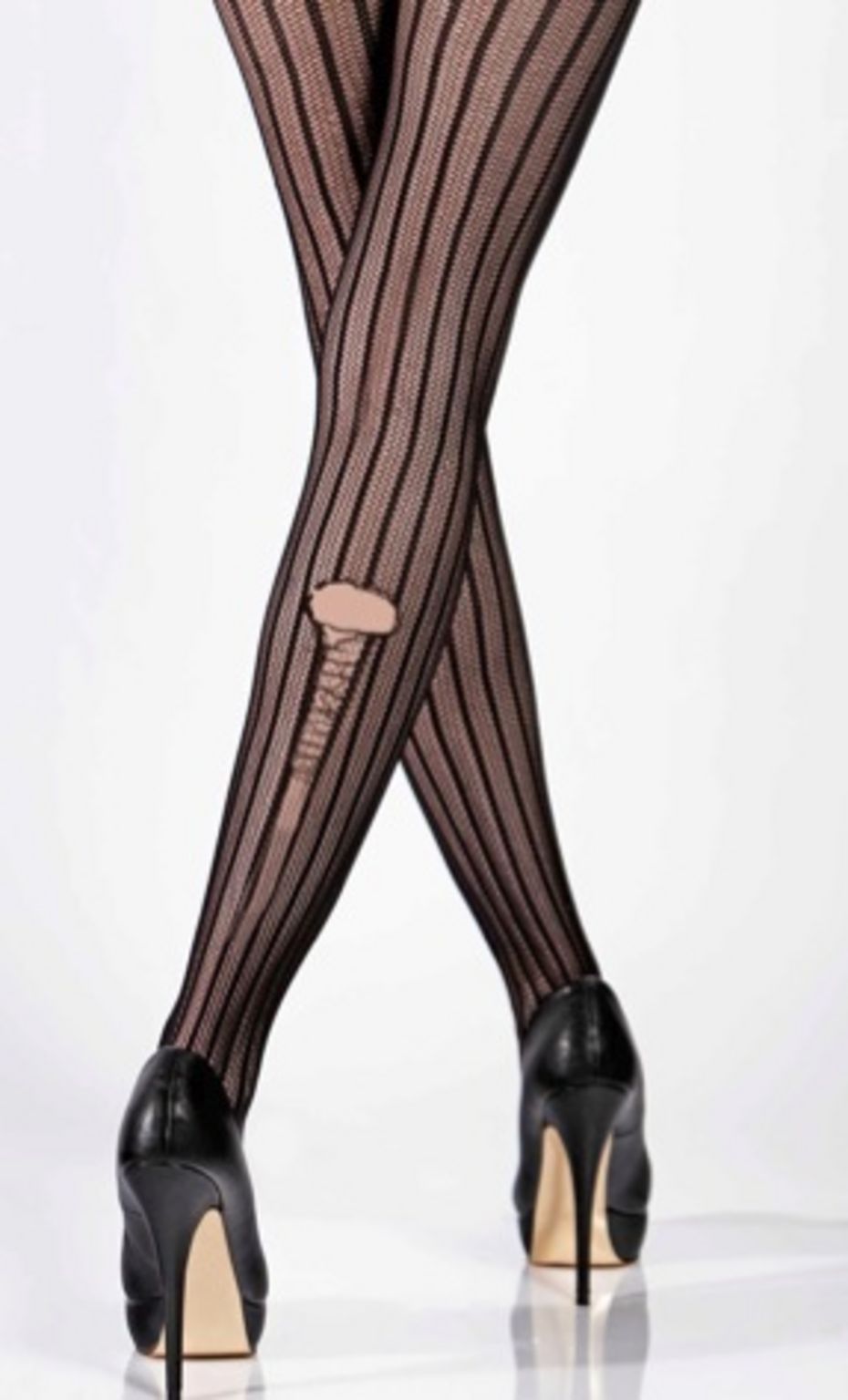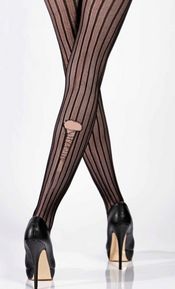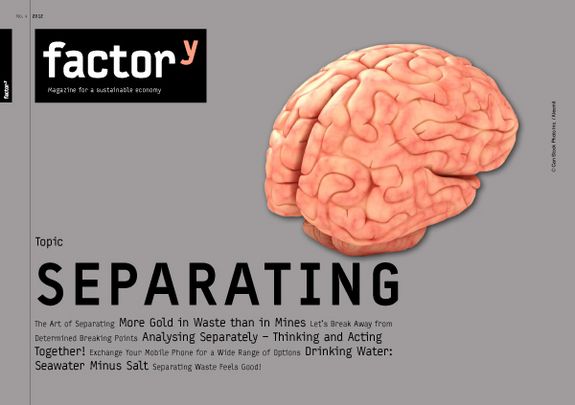Separating

Let’s Break Away from Determined Breaking Points

Many everyday products could have a longer lifecycle if they were designed accordingly. At the Folkwang University of the Arts, designers create new ideas for this purpose: about separating material, separate modules and separable joints.
By Anke Bernotat and Judith Schanz
Translated from the German by Nadja Gröner, Lea Schiefen, Christin Brauer
More and more frequently, the latest mobile phone is cast on the scrapheap after only one year. Not because of its design, but because it becomes less and less effective. The battery weakens quickly and unfortunately cannot be replaced, the keys get stuck, the glass screen is cracked, and to have it repaired would cost almost as much as a new phone.
However, it is not only mobile phones that are temperamental. We also have to part with our shoes, our bike lamps and various electronic devices sooner and sooner, because we can neither repair these products ourselves nor have them repaired. Skilled craft businesses have vanished; consumer electronics stores completely exchange products in the case of warranty claim, and sell new devices.
Users and manufacturers have to ask themselves whether today’s products are just too poorly designed or are produced too cheaply. Have we, as users and producers, forgotten how to be careful with our products, how to use them with care and have them repaired, or how to produce them so they can be fixed? How can the design of products help us to postpone the separation of users from their products as long as possible?
Most consumer goods are designed by industrial designers. Their role is crucial if relevant, durable and therefore sustainable products are to be created. By selecting high or low technology, materials and manufacturing processes, designers can generate concepts that will prolong the lifetime of products considerably. Thus, we do not have to separate ourselves from objects that are still fully operative or from valuable resources at an early stage.
Several creations of the Industrial Design course at the Folkwang University of the Arts
The Benefits of Cutting Off
If designers focus on beneficial effects and use a methodical approach, even traditional separation tools can be designed to be more user-friendly and durable. Sabet Regnery has designed a splitting axe based on the model of a traditional Japanese axe for carpenters. Her axe stands out due to its long blade. Thus, it produces a much deeper crack in the wood compared to conventional models – so wood can be split more easily. The user lets the axe drop only from the height of his head to split the wood with its dead weight. Because the axe is made of robust material, it suffers hardly any wear.
Unibble is another innovative separation tool. It helps children to cut their fingernails. The design created by Steffen Kauenhowen takes into account that children’s fingernails are still very soft and that conventional nail clippers often cause pain. Unibble provides a safe way for children to learn how to handle their nail care themselves.
Separability Extends Product Life
The possibility of repairing something is a big issue when creating sustainable products. When a product can be dismantled into its component parts, it is easier to repair. Unfortunately, manufacturers do not pay enough attention to the separability of component parts when developing and engineering their products. Thus, they impede the possibility of repair for many old products. However, a simple exchange of individual faulty components can considerably extend such products’ lifecycles, which often do not last longer than a year. Therefore, the motto for designers has to be Rethink - Research - Repair, as is the case, for example, within the Innovation and Design project that has been carried out in cooperation with the Fraunhofer Umsicht Institute (Fraunhofer Institute for Environmental, Safety and Energy Technology). In a repair workshop, students found out that many electronic gadgets give up the ghost because of smaller defects. Often, contacts are merely dirty, cables are not robust enough or accumulators are non-durable or not exchangeable.
If designers consider the economic value of modular construction, repairable and sustainable products will be produced. Take, for example, Vanessa Hapke's hand-held vacuum cleaner, which was able to be cleaned only with difficulty. The filter got dirty and a spare filter that costs nearly as much as a new vacuum cleaner was not designed to be easily exchangeable. So the machine became clogged and ‘died.’ Hence, the student concentrated on developing a hand-held vacuum cleaner that can be completely dismantled and has a universal accumulator. Spare parts are easily available in retail shops and can easily be mounted in the device.
Many products that could still be repaired are thrown away, because users have become too lazy to send defective devices in for repair. Besides, low original prices foster early separation. Ronja Hasselbach, a prospective designer, noticed that a friend of hers bought a new coffee machine nearly every year. She found out that the coffee machine was constructed in a careless and illogical manner. So she separated several functions of the machine: heating water, pumping water and brewing coffee.
On the basis of this knowledge, the student developed a modularly constructed concept for coffee brewing, which is less susceptible to defects. However, if anything should break, every module is easily accessible and can just as easily be repaired or exchanged.
Izabella Rudic noticed that in rucksacks of all kinds the zippers are the first thing to break. Besides, they are expensive or can only be repaired with specialised knowledge. Her solution is Keepe, a rucksack that works completely without a zipper. Users can repair such a product on their own without specialised knowledge. Moreover, the new closing technique turns the rucksack into an individual product that can be adapted to a variety of different situations. Thus, a profane aid in daily life acquires more personality – and the users do not want to ever separate themselves from it.
However, a modular and easily accessible design is not the only possibility for designers to extend the functioning of a product. If they separate the function from the product, the raw materials in the product can acquire new functions and even worn-out products can begin a new life.
The RELOAD stereo headphones, developed by Phillip Kaeppele and produced out of old vinyl records, are an example for this. Every RELOAD is unique and receives its characteristic look through the colours and labelling of the used records. The headphones can be self-assembled with the help of a blueprint. People who are less talented with crafts also have the possibility to order them via Internet and use the assembly service. Thus, favourite records can be saved from disposal and get a useful function the second time around as well. The RELOAD package is also an upcycled product. Two plastic bags are melted together and thus provide a unique cover that protects RELOAD during transportation.
Torn does not necessarily mean useless: Selina Strunk is annoyed by the fact that nylon tights wear out increasingly fast and that afterwards a large number of them are just thrown away. This is why she founded the label Eli Hetti that offers shoes made of torn nylons and could even win over Evonik as a partner for the material development. Try them yourself: who might have guessed that these fantastic shoes are made of nylons?
User and Product – an Inseparable Couple
There is no product without materials. Products require valuable resources. In order to use them in a reasonable and sustainable manner, designers are in demand more than ever. For as long as possible or at best indefinitely, users should be prevented from separating themselves from their products.
This is why products need to be esteemed and appreciated. Whenever there is a tie between the product and the user ? whether it is due to a function or to emotion ? the user will feel responsible for the product.
The creations presented here exemplify the different possibilities designers have to encourage users like us to establish a sound relationship with their products. Designers can simplify common tools. With the help of modular design they can make separation of a product into its component parts possible and thus create a possibility for simple exchange and repair of defective component parts. Designers can separate a function from a product in order to reuse the valuable materials for new functions and thus to make a longer lifecycle possible for these materials.
Regarding the dwindling resources of our planet, it is the designers’ task to support relevant and useful products and to equip them with materials with as much consideration as possible. The reason for this is that users should unconditionally be convinced by products so that they can strike up an inseparable relationship with them.
The pictures of these examples you will find in our PDF-magazine Separating, which is free to download and readable and good looking on tablets and screens.
Anke Bernotat is designer and professor for Industrial Design, including concepts and drafts, at the Folkwang University of the Arts in Essen. Judith Schanz works there as a research assistant.
More articles to the topic of Separating with expressive numbers and citations, nicely illustrated and readable on screens and tablets you will find in our PDF magazine Separating.
Beiträge online
SEPARATING

- The art of separation
- More Gold in Waste than in Mines
- Let’s Break Away from Determined Breaking Points
- Analysing Separately – Thinking and Acting Together!
- Tausche Handy gegen großes Menü
- Meerwasser minus Salz. Trennen fürs Trinkwasser.
News zum Thema
- 06/2014 | Separating: New Topic of Factory-Magazine
- 08/2013 | A Map for sustainable shopping in NRW
Themen
- The Domino Effect: the Mobility Transition as an Engine for the ‘Great Transformation’
- Cities Use the Space
- Decarbonization by 2030
- The fear of biting the hand that feeds you
- Where investing is a pleasure
- Why divestment is going to change the world
- A Robin Hood tax for climate protection
- May the Force Be with Us
- Modern Strategies
- The prerogative of interpreting the future now lies with the companies involved in climate protection”
- From Negotiating to Trading Equitably
- Can a donkey be tragic?
- Rethink rather than rebound: a sufficiency revolution must precede the efficiency revolution
- On Rebound, Prebound and Performance Gaps
- So Let Us Seize Power Then!
- With Common Property Against Political Failure
- So Let Us Seize Power Then!
- The Comforting Beauty of Failure
- “It Is Not Impossible at All.“
- Resource-light shopping
- Men Have Not Stopped Giving the Advantage to Women – So Far
- Toothpaste for Princesses and Soup for Pirates
- It is about equality
- A nice day
- Initiative instead of frustration
- The right ingredients
- Resilient for Life
- Not only, but also
- Appreciation – more please!
- Worth more than money
- Learning to value the value of goods
- Worth and Values
- The Transformative Power of Science
- Historically effective: How innovation and technology transform
- The Disappearance of Products
- Growing Older 101
- Columbus’ Egg
- It Works! In Theory at Least ...
- What If...?
- Analysing Separately – Thinking and Acting Together!
- Let’s Break Away from Determined Breaking Points
- More Gold in Waste than in Mines
- The art of separation
- Should you really DIY?
- The Aesthetics of Do-It-Yourself
- Standing on One’s Own Feet
- From the handaxe to desktop fabrication
- Using Shares to Survive the Crisis
- When Citizens participate
- Possess to Participate
- The Right Growth at the Right Time
- Gunter Pauli and Blue Economy
- When Sustainability Grows
- How we treat Growth
- Illusions about Growth

